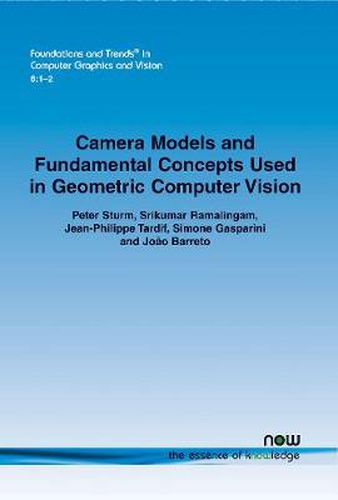Readings Newsletter
Become a Readings Member to make your shopping experience even easier.
Sign in or sign up for free!
You’re not far away from qualifying for FREE standard shipping within Australia
You’ve qualified for FREE standard shipping within Australia
The cart is loading…






This title is printed to order. This book may have been self-published. If so, we cannot guarantee the quality of the content. In the main most books will have gone through the editing process however some may not. We therefore suggest that you be aware of this before ordering this book. If in doubt check either the author or publisher’s details as we are unable to accept any returns unless they are faulty. Please contact us if you have any questions.
This book is mainly motivated by the increased availability and use of panoramic image acquisition devices, in computer vision and several of its applications. Different technologies and different computational models thereof exist and algorithms and theoretical studies for geometric computer vision ( structure-from-motion ) are often re-developed without highlighting common underlying principles. It surveys the image acquisition methods used in computer vision and especially, the vast number of camera models that have been proposed and investigated over the years, and points out similarities between different models. Results on epipolar and multi-view geometry for different camera models are reviewed as well as various calibration and self-calibration approaches, with an emphasis on non-perspective cameras.
Camera Models and Fundamental Concepts Used in Geometric Computer Vision also describes what the authors consider are fundamental building blocks for geometric computer vision or structure-from-motion: epipolar geometry, pose and motion estimation, 3D scene modeling, and bundle adjustment. The main goal here is to highlight the core principles of these, which are independent of specific camera models.
$9.00 standard shipping within Australia
FREE standard shipping within Australia for orders over $100.00
Express & International shipping calculated at checkout
This title is printed to order. This book may have been self-published. If so, we cannot guarantee the quality of the content. In the main most books will have gone through the editing process however some may not. We therefore suggest that you be aware of this before ordering this book. If in doubt check either the author or publisher’s details as we are unable to accept any returns unless they are faulty. Please contact us if you have any questions.
This book is mainly motivated by the increased availability and use of panoramic image acquisition devices, in computer vision and several of its applications. Different technologies and different computational models thereof exist and algorithms and theoretical studies for geometric computer vision ( structure-from-motion ) are often re-developed without highlighting common underlying principles. It surveys the image acquisition methods used in computer vision and especially, the vast number of camera models that have been proposed and investigated over the years, and points out similarities between different models. Results on epipolar and multi-view geometry for different camera models are reviewed as well as various calibration and self-calibration approaches, with an emphasis on non-perspective cameras.
Camera Models and Fundamental Concepts Used in Geometric Computer Vision also describes what the authors consider are fundamental building blocks for geometric computer vision or structure-from-motion: epipolar geometry, pose and motion estimation, 3D scene modeling, and bundle adjustment. The main goal here is to highlight the core principles of these, which are independent of specific camera models.